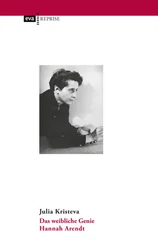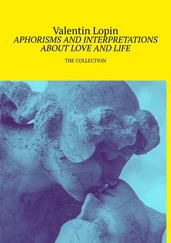“Quit acting like one of those old-school analysts: lavatory/lavender, is that it?”
Marianne Baruch, the MPH psychiatrist, my only friend in here or anywhere, sticks to prescribing slews of pills. She loathes all that Freudian — Lacanian mumbo jumbo, which it amuses her to attribute to me. Parapeted behind thick glasses, encased in faded jeans like a fifty-something teen, she’s a gruff character whose affection, on its rare outings, is mostly for me. But I was talking about Élise. Any exchanges between the young girl and myself serve only to help us arrive at the things that begin (with all due respect to Dr. Baruch) in the sphere of sensation. Lavender is odorous and tactile, it dampens and lubricates, it caresses. It does these things, not me. I improvise: I bring flowers, I play, she plays, savors, sniffs. And one thing leading to the next, Élise brings out some pieces of her ragged story. Her mother hasn’t been to see her for five years. She remarried and left Paris, she’s probably got other worries now. Only her father still takes my Élise out for the odd weekend. He is a sad, shriveled little man, impossible to seduce, no matter how much supermarket cologne or lavender essence his daughter pours over herself.
Nothing had predisposed me to do this job. I drifted for years between the couch and the library, but I was not cut out to teach, still less to teach literature. My salvation was Marguerite Duras: I never completed my thesis on her, because the more I thought about her the more depressed I got, but I did turn it into a slim volume, Duras, or the White Apocalypse , published by Zone.
“You’re a shrewd psychologist, Sylvia, and one might also spot a streak of theology in that apocalypse of yours,” remarked my publisher, Bruno Zonabend. This was hardly a compliment to the literary type I thought myself to be. Theology meant nothing to me in those days. I ditched my thesis and went back to school, this time to study psychology, and here I am: Sylvia Leclercq, clinical psychologist. Practicing part-time at the MPH, the rest with private patients. And, more lately, sharing my nights with Teresa of Avila.

On March 28, 1515, in the province of Avila, a third child was born to don Alonso Sánchez de Cepeda and his wife, doña Beatriz de Ahumada. It was a girl. Don Alonso was the son of Juan Sánchez, a “reconciled” convert from Judaism also known as Juan de Toledo, a wealthy tax collector and draper, and of doña Inés de Cepeda, from an Old Christian family of minor aristocratic rank. At her christening on April 4 in Avila, the infant was given the name of Teresa after her maternal grandmother, doña Teresa de las Cuevas, and her paternal great-grandmother, Teresa Sánchez. Her family name was a composite of her parents’ surnames: de Cepeda y Ahumada. The patronym Sánchez, perceived as Jewish, was gradually dropped in favor of the stalwart Catholicism of the Cepeda stock. Thus Teresa bore just one first name plus the last names of her only Catholic forbears (the Cepedas and the Ahumadas), all on the female side. Such an onomastic apparatus strikes me as perfectly tailored to the person in question.
But what of the Marrano status of her father’s line, the forced conversion to Catholicism? Had it become diluted, or did it, on the contrary, persist like an invisible magnet attracting Teresa’s faith to the inner, exploratory life, rather than to the facile schemas of established religion? Some scholars make much of the humiliation suffered by her merchant grandfather Juan Sánchez, condemned to wear the sambenito —the infamous yellow ruff that denoted a converted “swine” (Marrano) who had secretly relapsed into the old faith — for seven Fridays in a row, jeered by the Toledans who were not so fastidious when it came to using his financial services. Others cite the incident as evidence that Teresa’s ancestor could not have been a serious backslider, let alone a heretic, because the penance assigned by the Inquisition to obtain his “reconciliation” was distinctly moderate for a period when death sentences were handed out by the thousand. Besides, Alonso, Teresa’s father, regarded himself simply as a good Catholic. Could it be that this dissolution of Judaism into the intimacy of a new, ardent faith, rebelling against the exhaustion of tradition, provides a key to Teresa’s uncompromising, reforming spirit?
This view is taken by Michel de Certeau, who finds that a “strange alliance joins the ‘mystic’ spoken word to ‘impure blood.’” 13The crossing of two religious traditions, one repressed and hidden in the private realm, the other triumphant but “corrupt,” undoubtedly helped the “New Christians” to create a new discourse, freed from dogmatic reiteration and structured — like a spiritual marranismo —by the opposition of internal “purity” and external “falsehood.”
If on the one hand Teresa inherited, albeit unconsciously, this spiritual marranismo , it merged on the other hand with a sensibility dominated by Catholicism…in the feminine. For better or worse, for suffering or pleasure. Did that alone persuade the future saint that God was more generous to women, that women “make much more progress along this path [of mystical experience] than men do”? 14
Teresa was four years old when the municipal authorities brought a fiscal suit against the Sánchez de Cepeda family, requiring them to prove in court that they possessed the rank of hidalgos, without fiefs or titles perhaps, but exempt from tax. In fact, they already enjoyed this privilege. Juan Sánchez and then his sons had earned it by their social success; they lived like nobles and served the king. Formal hidalgo status was legally granted four years later. Was this how Teresa learned that she was the granddaughter of a converso? Her writings give no indication of it. Nevertheless, the suspicion of a lack of honra , “honor,” tormented the future saint all her life. She harps tirelessly on this “point of honor,” this obligation to “ sustentar la honra ,” uphold the burden of honor and preserve one’s rank. It was a constant worry for the Sánchez de Cepeda family, as much when they were rich as when they were poor: could it be due to their marranismo ? Most theologians and other interpreters of Teresa have studiously ignored the sociohistorical and political dimensions of this particular obsession.

In 1528 Alonso Sánchez de Cepeda was left with twelve children on his hands — two from a first marriage (María and Juan), ten from the second (Fernando, Rodrigo, Teresa, Juan, Lorenzo, Antonio, Pedro, Jerónimo, Agustín, and Juana) — when Teresa’s mother Beatriz de Ahumada died, possibly in the course of her tenth and final delivery. In July 1531, aged sixteen, Teresa entered the small Augustinian Convent of Our Lady of Grace in Avila. All of her brothers became soldiers, except for Juan. They emigrated: Fernando was the first to sail for the Indies (America), and the favorite, Rodrigo, embarked for the Plate estuary in 1535. Antonio, Pedro, Jerónimo, Lorenzo, and Agustín followed in their wake between 1540 and 1543, eager to acquire wealth and honors in the New World now that their father’s money had almost run out. Living exclusively off the land as a hidalgo was less profitable than selling silks or collecting taxes, and before long the Cepeda y Ahumada family was ruined.
On November 2, 1535, Teresa ran away from her father’s home to join the Carmel of the Incarnation. There she took her vows, after spending a year as a postulant. She was twenty years old. Her father died in December 1543, leaving considerable debts, over which some of his heirs would quarrel for two decades.
Читать дальше













